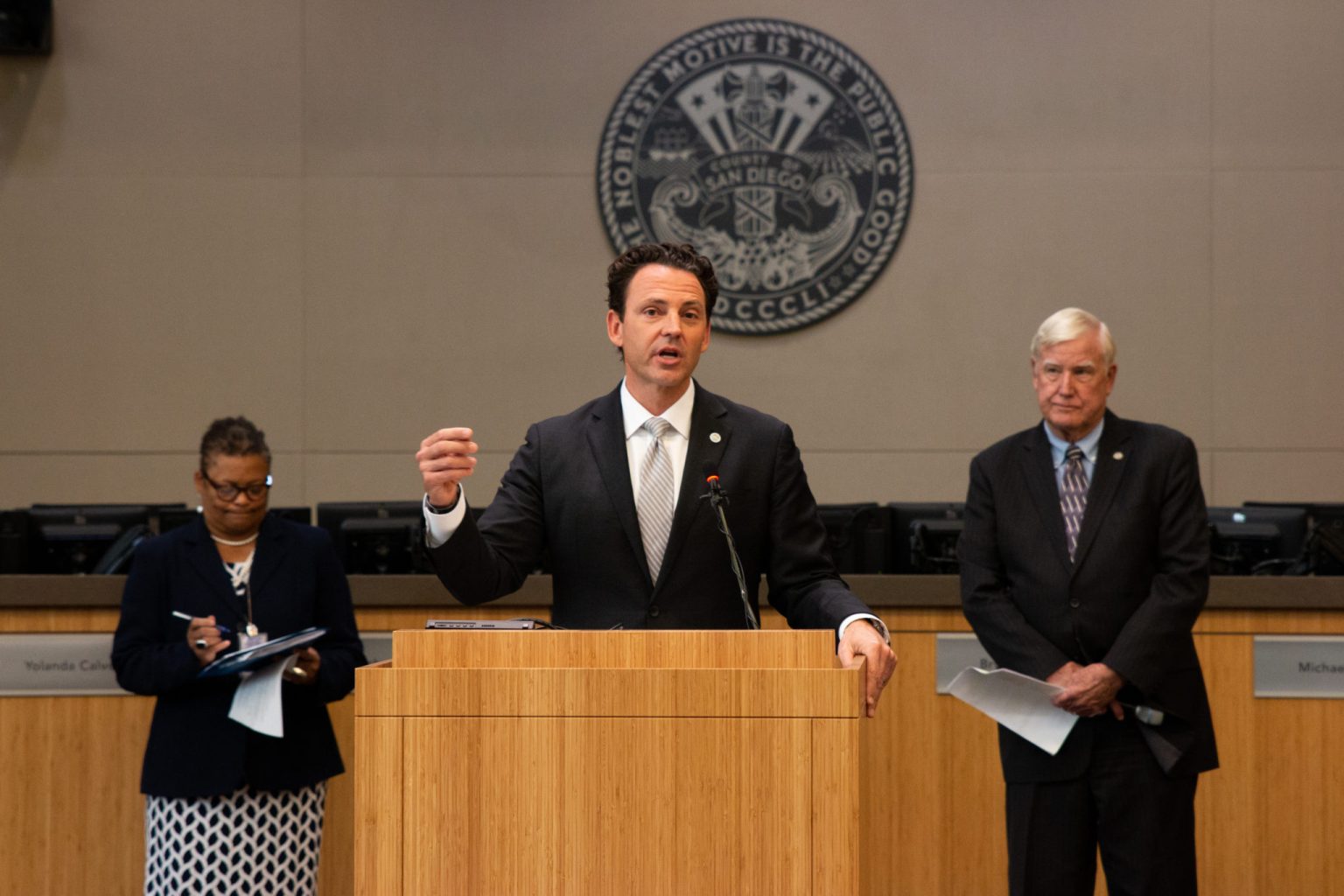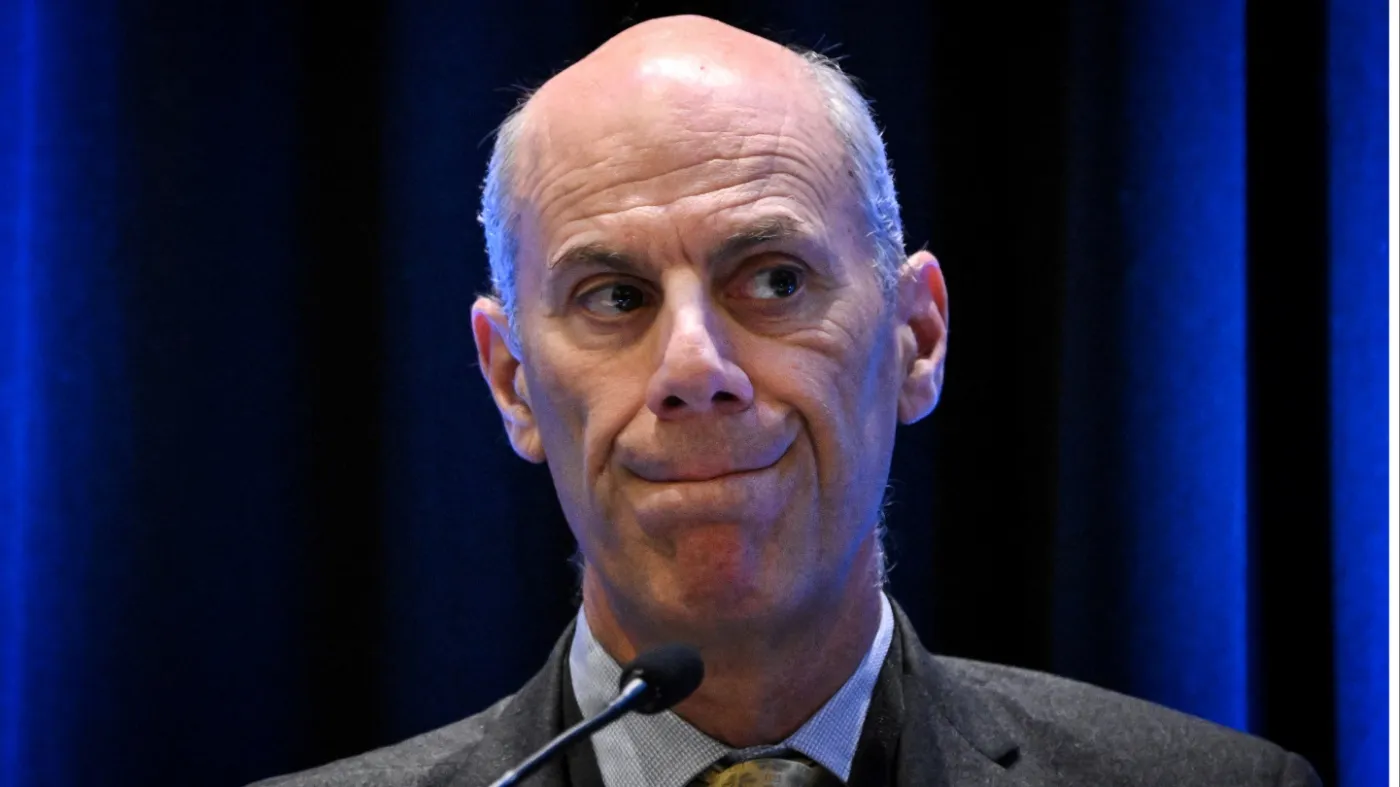A Voice of San Diego analysis of death certificates and public voter files reveals that partisan affiliation was a predictor of one’s likelihood to perish during year two of the pandemic. Those who decline to identify with a party also saw a higher rate of death.
During the first year of the pandemic, Democrats died at higher rates than Republicans. But during the second year, as Covid vaccines became widely available, Republicans in San Diego County began dying at significantly higher rates than Democrats, a new analysis by Voice of San Diego found.
That finding might sound familiar. But other prominent analyses only surmised Republicans died at higher rates, by comparing Covid death rates to voting patterns. Voice’s analysis actually matched the names of people who died from Covid in San Diego County to their political party affiliation.
Republicans were 39 percent more likely to die with Covid during year two of the pandemic, even after adjusting for the fact that they tend to be older than Democrats. Independent voters — who belong to no political party — were also 30 percent more likely to die than Democrats during the pandemic’s second year.
In all, at least 534 San Diego Republicans died in year two of the pandemic. During the same time, at least 405 Democrats died. But for every Republican in the county there are roughly 1.5 Democrats — which accounts for the widely varying death rates.
“It disturbs me significantly,” said Greg Cox, a Republican and former county supervisor, who helped lead the local response to Covid. “Does it surprise me? No, not really. I would assume it was because of the influence of some people in the Republican Party who made a concerted effort to convince people not to get vaccinated.”
The death rates roughly align with trends in vaccination rates across the country. In September 2021, 92 percent of Democrats reported being vaccinated. Among independents, 68 percent were vaccinated. And among Republicans, just 56 were vaccinated, according to Gallup.
Voice sued San Diego County to get access to local Covid death certificates as part of its investigation. After winning the lawsuit, reporters spent months manually logging each one that listed Covid as a primary or contributing cause of death between March 2020 and March 2022. We then matched the name of each person who died to their voter record — if they had one listed on the county’s public voter roll — to learn their actual political party.
Previous reports have analyzed Covid death rates in counties that tend to vote Republican versus those that tend to vote Democratic. But those reports left unanswered the question of whether actual Republicans were dying at higher rates, or whether something else might be at play.
Another study matched death records to voter rolls, but instead of looking specifically at Covid-related deaths, it focused on “excess deaths” — a public health term for the number of deaths above and beyond those that normally occur. That study found excess deaths were 76 percent higher among Republicans.
Researchers and public health specialists interviewed by Voice pointed to vaccine resistance as the most obvious reason for the widely differing death rates in San Diego County.
“The vaccine was definitely at play in this,” said Ming-Hsiang Tsou, a geography professor at San Diego State who helped local officials analyze how the virus spread. “Attitudes towards vaccinations are hugely different among the political parties.”
A previous analysis by Voice also found that death rates shifted drastically across the region during the second year of the pandemic, moving into more conservative-leaning areas like Lakeside and Santee. The finding was especially striking since death rates went down in virtually every other ZIP code in San Diego County after the arrival of vaccines.
Rebecca Fielding-Miller, a public health professor at UC San Diego, said the difference in death rates might also be related to “a whole behavioral package” — including people’s willingness to wear a mask or avoid indoor gatherings — that separated the two major political parties.
People are also increasingly socializing in a bubble with others who share their ideological perspective. That creates “an effect multiplier,” as Fielding-Miller put it. People tend to make the same choices on masking or other Covid precautions as the others they’re hanging out with. “The social norms reinforce one another,” she said, “and you are in a social network with much higher risks.”
The local death rates show Democrats were significantly more vulnerable to Covid than Republicans in San Diego County during the pandemic’s first year. And on the whole, Democrats do share many characteristics with those whom the virus hit hardest. People of color, who are much more likely to be registered as Democrats, are also more likely to live in multi-generational housing and suffer from underlying health conditions. Democrats also are more likely to work low-wage, public-facing jobs.
When comparing the change in death rates between years one and two, the differences between the parties become even more stark. Democrats’ death rate dropped four times more than Republicans after vaccines became widespread.
The death rate among Democrats dropped by roughly 53 percent between years one and two. It dropped just 13 percent for Republicans and 25 percent for independent voters.
Most independent voters actually lean one way or the other politically. Roughly 48 percent tend to support Democrats and 39 percent tend to support Republicans, Pew found in 2018.
Even though independents are split ideologically, they do have one underlying characteristic that aligns with traditional Republican politics. Independents across the spectrum tend to express a greater distrust of government — which may have played a role in their willingness to receive the vaccine.
“It could really well be that the distrust translates into the public health arena,” said Seth Hill, a political science professor at UCSD.
Republican and Democratic trust in government, on the other hand, tends to fluctuate depending on which party is in power, said Nicholas Boushee, a professor of political science at San Diego City College.
Republicans lost control of the White House just as the vaccine was becoming widely available, which might have amplified their distrust. On top of that, the party’s leader was sending out mixed messages, Boushee said.
Donald Trump took credit for the vaccine rollout and even called masks “patriotic” at one point. But he also questioned whether they were effective at stopping the virus and mocked his opponent for wearing one.
Supervisor Nathan Fletcher, a Democrat, led the county’s response to Covid, along with Cox, the former Republican supervisor. He remembered an early press conference at which Republicans and Democrats had been completely united on their response to the virus.
After the Vaccine, Republicans Became Far More Likely to Die with Covid-19 Than Democrats




